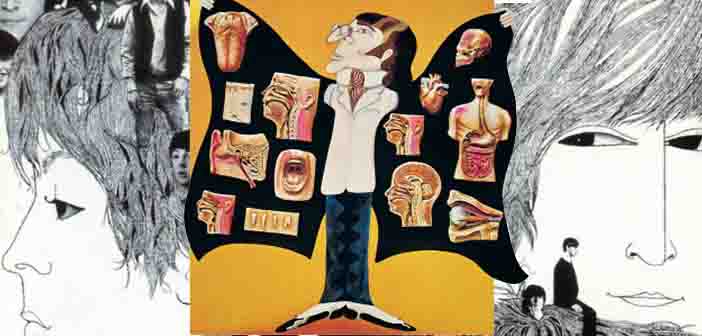
Keep in mind, however, that when he was asked about the inspiration behind “Eleanor Rigby” his response was “two queers.”
Also, when a reporter asked what they thought about a Time Magazine article that explained “Day Tripper” as being about a prostitute and “Norwegian Wood” as being about a lesbian (which is not).
Paul’s response was “We were just trying to write songs about prostitutes and lesbians, you know.” Obviously they were joking at the expense of those who were trying to interpret their music.
This is an excerpt from thebeatlesebook.com to read the full story click here
So, when was the first time that you suspected from listening to their music that The Beatles were using drugs? Most first generation fans would probably point to songs from the year 1967, such as the lyric “I get high with a little help from my friends,” or the imagery used in “Lucy In The Sky With Diamonds,” The year 1968 gave us clues as well, such as the lyrics “I need a fix ‘cause I’m going down” from “Happiness Is A Warm Gun” and “the deeper you go, the higher you fly” from “Everybody’s Got Something To Hide Except Me And My Monkey.”

“Day Tripper” were a notable example, but they were included in such a way that not many would suspect anything. “The Word” was admittedly written under the influence of marijuana, as was a lot of the “Rubber Soul” album, but that was also veiled in disguise.
Another curious quote from John about the song came in 1980. “It was about myself. I was the one that carried all the pills on tour and always have done. Well, in the early days. Later on the roadies did it, and we just kept them in our pockets loose, in case of trouble.”
While this appears to be the final word on the matter, there seems to be more to the story. Referring to a New York doctor that they’d heard about, Paul explains: “We’d hear people say, ‘You can get anything off him, any pills you want.’
As far as I know, neither of us ever went to a doctor for those kind of things. But there was a fashion for it and there still is. Change your blood and have a vitamin shot and you’ll feel better.”
Pete Shotton attempts to add more details to the story: “John paid sardonic tribute to an actual New York doctor. His real name was Charles Roberts, whose unorthodox prescriptions had made him a great favorite of Andy Warhol’s entourage and, indeed, of The Beatles themselves, whenever they passed through town.”
It was an alias used by the biographer of Warhol actress Edie Sedgwick, Jean Stein, to conceal the identity of another ‘speed doctor.
In fact, the name was based on the New York Dr. Feelgood character Dr. Robert Freymann, whose discreet East 78th Street clinic was conveniently located for Jackie Kennedy and other wealthy Upper East Siders from Fifth Avenue and Park to stroll over for their vitamin B-12 shots, which also happened to contain a massive dose of amphetamine. Dr. Robert’s reputation spread and it was not long before visiting Americans told John and Paul about him.”
German born Robert Freymann, sometimes known as Dr. Robert , continued his practice in New York for many years administering legal amphetamines in larger than needed doses to mostly well-to-do clients. “I have a clientele that is remarkable, from every sphere of life,” he has stated. “I could tell you in ten minutes probably 100 famous names who come here.” He continued his practice until he was expelled from the New York State Medical Society in 1975 for malpractice. His book "What's So Bad About Feeling Good?" was published in 1983. He passed away in 1987.
“John and I thought it was a funny idea: the fantasy doctor who would fix you up by giving you drugs, it was a parody on that idea. It’s just a piss-take.” As early as 1967, Paul explained the meaning of the song: “That’s what ‘Doctor Robert’ is all about, just a pill doctor who sees you all right. It was a joke between ourselves, but they go in in-jokes and come out out-jokes, because everyone listens and puts their own thing on it, which is great. I mean, when I was young I never knew what ‘gilly gilly otsen feffer casta nell a bogen’ was all about, but I still enjoyed singing it.”
As to who wrote what, John said in his 1972 interview with Hit Parader Magazine that it was mostly written by him, but then stated “I think Paul helped with the middle.” The sentiment expressed by Paul in his statements about the song seems to corroborate this point.
To read the full article click here
